Citation count prediction information
Home » Trend » Citation count prediction informationYour Citation count prediction images are ready in this website. Citation count prediction are a topic that is being searched for and liked by netizens today. You can Find and Download the Citation count prediction files here. Get all free vectors.
If you’re searching for citation count prediction images information connected with to the citation count prediction keyword, you have pay a visit to the right blog. Our website always provides you with suggestions for downloading the maximum quality video and picture content, please kindly search and find more enlightening video content and graphics that match your interests.
Citation Count Prediction. The task of predicting the citation counts for scientific publications as well as the general study of citing behavior have long attracted attention in the academic world. Here, we introduce the task of sequence citation prediction. In order to train a citation count prediction model, we employed artificial neural network which is a powerful machine learning tool with recently growing applications in many domains including. An important kind of data signals, peer review text, has not been utilized for the ccp task.
 Refer to previous reference, different page numbers in From tex.stackexchange.com
Refer to previous reference, different page numbers in From tex.stackexchange.com
The dataset is obtained by scraping the arxiv.org web page, and the citation counts for the papers. Future citation counts of papers are an important metric to estimate potential influences of published papers, and will be helpful for researchers to choose representative literatures. Learning to estimate future citations for literature yan, rui; Prior work viewed this as a static prediction task. Define the citation count prediction (ccp) task. Citation count is a reasonable feature for formalizing scientific impact.
Define the citation count prediction (ccp) task.
Paper add code a hybrid generative/discriminative approach to. Previous studies mainly focus on extracting or mining useful features from the paper itself or the associated authors. Predicted citation counts for 204 publications from the 1991 emergency medicine specialty meeting. The study is based on 2600 papers of physiology extracted from web of. From this point of view, a new supervised link prediction method is proposed to predict the citation count of scientists (pccs). They used decision trees and showed that.
 Source: deepai.org
Source: deepai.org
For example, callaham et al. Here, we introduce the task of sequence citation prediction. Citation count is a reasonable feature for formalizing scientific impact. This repository contains the dataset and the source code for the emnlp 2019 paper a neural citation count prediction model based. Predicted citation counts for 204 publications from the 1991 emergency medicine specialty meeting.
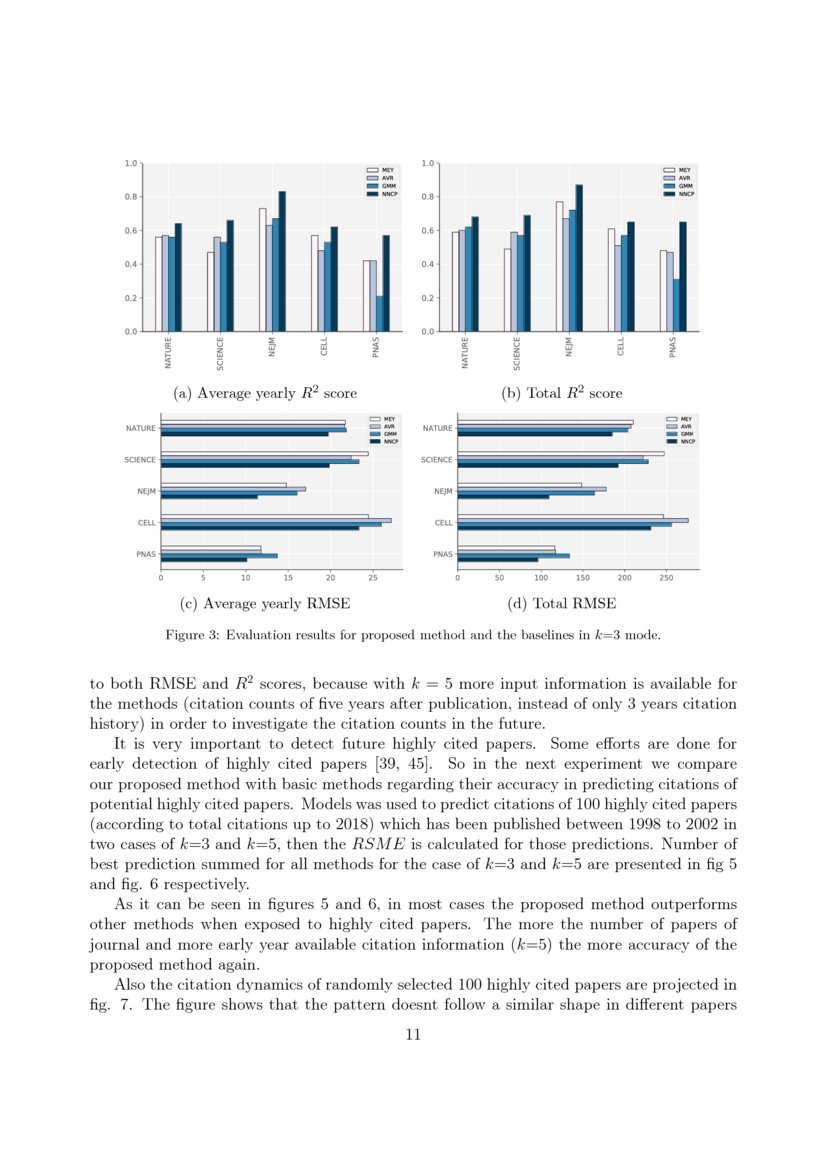 Source: deepai.org
Source: deepai.org
Fu and aliferis predict citation count within 10 years after publication with bibliometric information (number of articles for the first author, number of citations for the first author, number of authors, number of institutions and so on), the journal impact factor and the content of the article (title, abstract and mesh terms). In this paper, we use the citations as a measurement for the popularity among researchers and study the interesting problem of citation count prediction (ccp) to examine the characteristics for popularity. Citation count prediction is the task of predicting the number of citations a paper has gained after a period of time. For example, callaham et al. Define the citation count prediction (ccp) task.
 Source: researchgate.net
Source: researchgate.net
Fu and aliferis predict citation count within 10 years after publication with bibliometric information (number of articles for the first author, number of citations for the first author, number of authors, number of institutions and so on), the journal impact factor and the content of the article (title, abstract and mesh terms). We aim to learn an effective predictive function that takes as input the abstract text, review text and other available information and estimates the future citation count after a given time period: Future citation counts of papers are an important metric to estimate potential influences of published papers, and will be helpful for researchers to choose representative literatures. The task of predicting the citation counts for scientific publications as well as the general study of citing behavior have long attracted attention in the academic world. Citation count prediction is the task of predicting the number of citations a paper has gained after a period of time.
 Source: researchgate.net
Source: researchgate.net
Citation count prediction based on neural hawkes model @article{liu2020citationcp, title={citation count prediction based on neural hawkes model}, author={lisha liu and dongjin yu and dongjing wang and fumiyo fukumoto}, journal={ieice trans. For example, callaham et al. The task of citation count prediction has gained a lot of attention in recent years as the usage of these counts for assessment of scholarly impact became more pronounced. The task of citation counts prediction is to predict the citation counts of a paper after a given time period. Estimation of possible popularity is of great significance and is quite challenging.
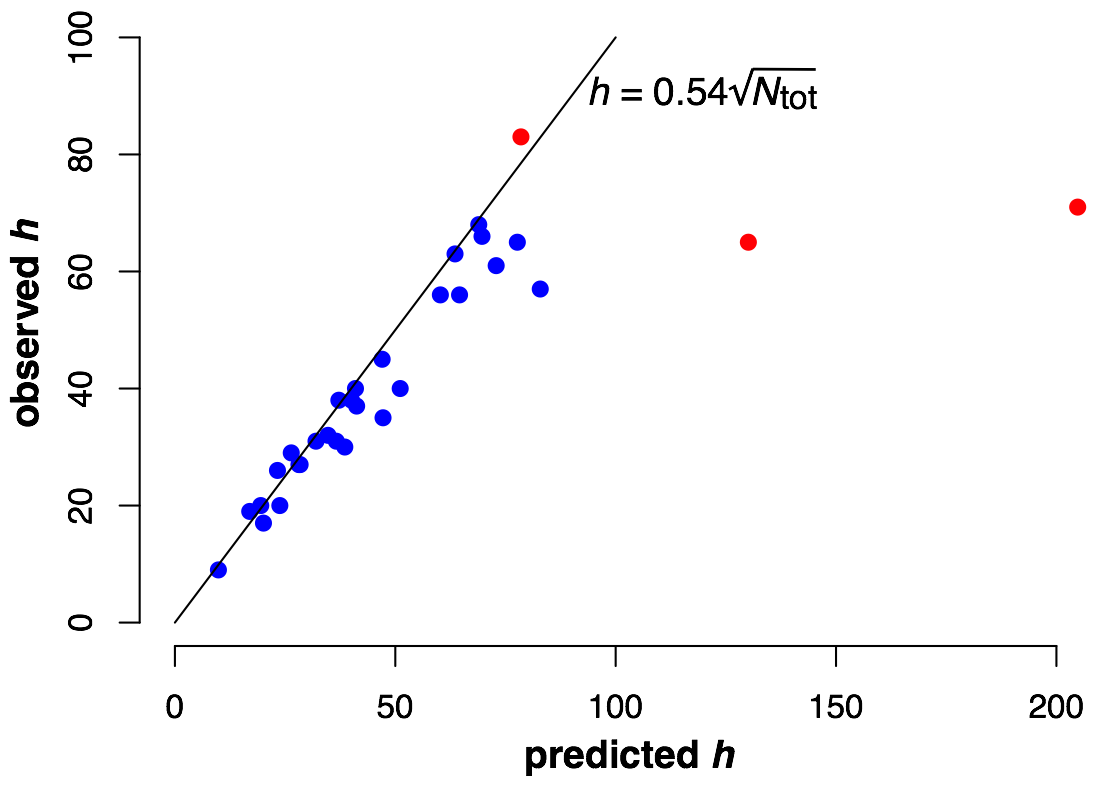 Source: clauswilke.com
Source: clauswilke.com
Prior work viewed this as a static prediction task. In this work, the prediction of future citation counts is considered as binary classification task. In this paper, we use the citations as a measurement for the popularity among researchers and study the interesting problem of citation count prediction (ccp) to examine the characteristics for popularity. Learning to estimate future citations for literature rui yan dept. We aim to learn an effective predictive function that takes as input the abstract text, review text and other available information and estimates the future citation count after a given time period:
 Source: researchgate.net
Source: researchgate.net
Citation count is a reasonable feature for formalizing scientific impact. The dataset is obtained by scraping the arxiv.org web page, and the citation counts for the papers. Paper add code a hybrid generative/discriminative approach to. From this point of view, a new supervised link prediction method is proposed to predict the citation count of scientists (pccs). Estimation of possible popularity is of great significance and is quite challenging.
 Source: tex.stackexchange.com
Source: tex.stackexchange.com
The measure of this impact is the citation count of each paper, that is, the number of citations from other papers to that paper. We aim to learn an effective predictive function that takes as input the abstract text, review text and other available information and estimates the future citation count after a given time period: Citation count prediction is the task of predicting the number of citations a paper has gained after a period of time. And they do not take advantage of any topological features of complex. Predicted citation counts for 204 publications from the 1991 emergency medicine specialty meeting.
 Source: researchgate.net
Source: researchgate.net
Here, we introduce the task of sequence citation prediction. Prior work viewed this as a static prediction task. The dataset is obtained by scraping the arxiv.org web page, and the citation counts for the papers. We aim to learn an effective predictive function that takes as input the abstract text, review text and other available information and estimates the future citation count after a given time period: F(xd,ad,{rk}kk=1)→ˆcd, (1) where cˆd is the estimated citation count for d.to
 Source: researchgate.net
Source: researchgate.net
The task of predicting the citation counts for scientific publications as well as the general study of citing behavior have long attracted attention in the academic world. All these features are available at the time of. F(xd,ad,{rk}kk=1)→ˆcd, (1) where cˆd is the estimated citation count for d.to Prior work viewed this as a static prediction task. In this work, the prediction of future citation counts is considered as binary classification task.
Source: github.com
Citation count prediction (ccp) has been an important research task for automatically estimating the future impact of a scholarly paper. The task of citation count prediction has gained a lot of attention in recent years as the usage of these counts for assessment of scholarly impact became more pronounced. F(xd,ad,{rk}kk=1)→ˆcd, (1) where cˆd is the estimated citation count for d.to Citation count is a reasonable feature for formalizing scientific impact. Citation count prediction (ccp) has been an important research task for automatically estimating the future impact of a scholarly paper.
 Source: bmj.com
Source: bmj.com
Previous studies mainly focus on extracting or mining useful features from the paper itself or the associated authors. In this paper, we use the citations as a measurement for the popularity among researchers and study the interesting problem of citation count prediction (ccp) to examine the characteristics for popularity. The task of citation counts prediction is to predict the citation counts of a paper after a given time period. Citation count prediction is the task of predicting the number of citations a paper has gained after a period of time. F(xd,ad,{rk}kk=1)→ˆcd, (1) where cˆd is the estimated citation count for d.to
 Source: researchgate.net
Source: researchgate.net
And they do not take advantage of any topological features of complex. The results showed that the proposed method was more effective than the traditional machine learning methods such as support vector machine and decision tree. Paper add code a hybrid generative/discriminative approach to. F(xd,ad,{rk}kk=1)→ˆcd, (1) where cˆd is the estimated citation count for d.to Looking at multiple domains, i identify differences both in the ability to predict citation counts as well as the nature of features that contribute to the prediction.
 Source: researchgate.net
Source: researchgate.net
Count prediction (ccp) to examine the correlative characteristics for popularity. Of computer science and technology peking university beijing 100871, p. Count prediction (ccp) to examine the correlative characteristics for popularity. The measure of this impact is the citation count of each paper, that is, the number of citations from other papers to that paper. Citation count prediction based on neural hawkes model @article{liu2020citationcp, title={citation count prediction based on neural hawkes model}, author={lisha liu and dongjin yu and dongjing wang and fumiyo fukumoto}, journal={ieice trans.
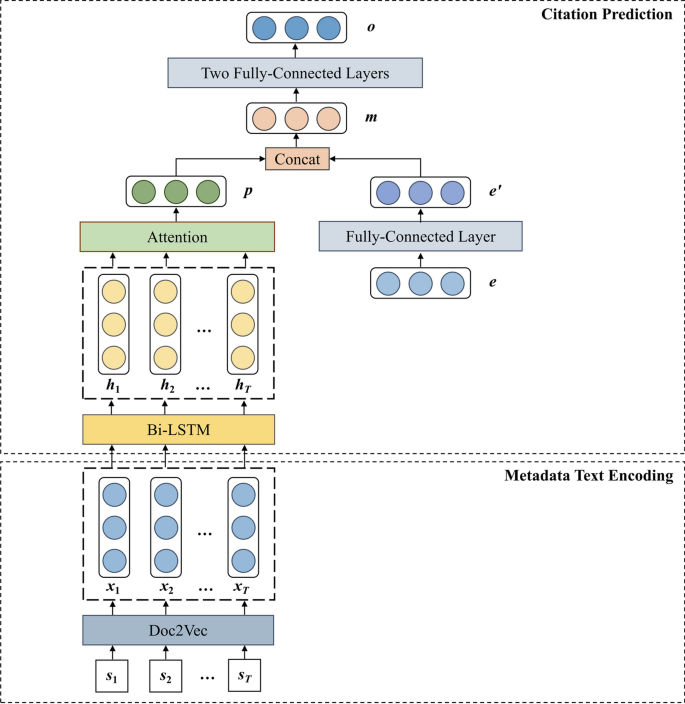 Source: link.springer.com
Source: link.springer.com
Paper add code a hybrid generative/discriminative approach to. Predicting citation count enables us to screen papers to determine papers that potentially have high impact. Looking at multiple domains, i identify differences both in the ability to predict citation counts as well as the nature of features that contribute to the prediction. The results showed that the proposed method was more effective than the traditional machine learning methods such as support vector machine and decision tree. All these features are available at the time of.
 Source: researchgate.net
Source: researchgate.net
Paper add code a hybrid generative/discriminative approach to. This repository contains the dataset and the source code for the emnlp 2019 paper a neural citation count prediction model based. For example, callaham et al. Citation count prediction based on neural hawkes model @article{liu2020citationcp, title={citation count prediction based on neural hawkes model}, author={lisha liu and dongjin yu and dongjing wang and fumiyo fukumoto}, journal={ieice trans. Fu and aliferis predict citation count within 10 years after publication with bibliometric information (number of articles for the first author, number of citations for the first author, number of authors, number of institutions and so on), the journal impact factor and the content of the article (title, abstract and mesh terms).
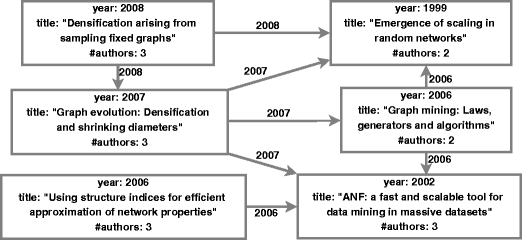 Source: link.springer.com
Source: link.springer.com
And they do not take advantage of any topological features of complex. In this paper, we use the citations as a measurement for the popularity among researchers and study the interesting problem of citation count prediction (ccp) to examine the characteristics for popularity. Prior work viewed this as a static prediction task. Citation count prediction is the task of predicting the number of citations a paper has gained after a period of time. For example the usage of citation counts in google scholar’s ranking.
 Source: aclweb.org
Source: aclweb.org
Citation count is a reasonable feature for formalizing scientific impact. Citation count prediction is the task of predicting the number of citations a paper has gained after a period of time. Estimation of possible popularity is of great significance and is quite challenging. In this paper, we use the citations as a measurement for the popularity among researchers and study the interesting problem of citation count prediction (ccp) to examine the characteristics for popularity. Citation count prediction based on neural hawkes model @article{liu2020citationcp, title={citation count prediction based on neural hawkes model}, author={lisha liu and dongjin yu and dongjing wang and fumiyo fukumoto}, journal={ieice trans.
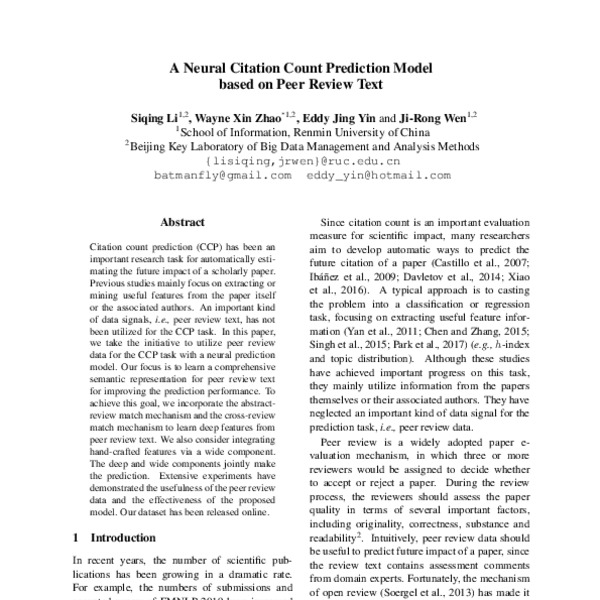 Source: aclanthology.org
Source: aclanthology.org
The results showed that the proposed method was more effective than the traditional machine learning methods such as support vector machine and decision tree. Here, we introduce the task of sequence citation prediction. Learning to estimate future citations for literature yan, rui; Prior work viewed this as a static prediction task. The measure of this impact is the citation count of each paper, that is, the number of citations from other papers to that paper.
This site is an open community for users to submit their favorite wallpapers on the internet, all images or pictures in this website are for personal wallpaper use only, it is stricly prohibited to use this wallpaper for commercial purposes, if you are the author and find this image is shared without your permission, please kindly raise a DMCA report to Us.
If you find this site value, please support us by sharing this posts to your preference social media accounts like Facebook, Instagram and so on or you can also save this blog page with the title citation count prediction by using Ctrl + D for devices a laptop with a Windows operating system or Command + D for laptops with an Apple operating system. If you use a smartphone, you can also use the drawer menu of the browser you are using. Whether it’s a Windows, Mac, iOS or Android operating system, you will still be able to bookmark this website.
Category
Related By Category
- Citaten van friedrich von schiller information
- Citaten over inzicht information
- Citation carpe diem information
- Citation film pretty woman information
- Citation destin amour information
- Citaten veiligheid information
- Citation de gaulle staline information
- Citation cleanup information
- Citaten roosevelt information
- Citation freddie mercury amour information